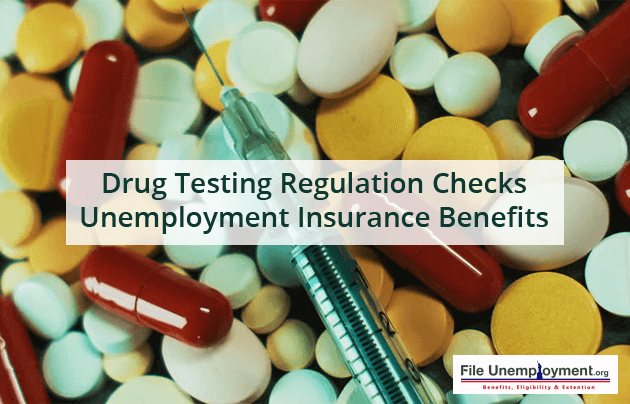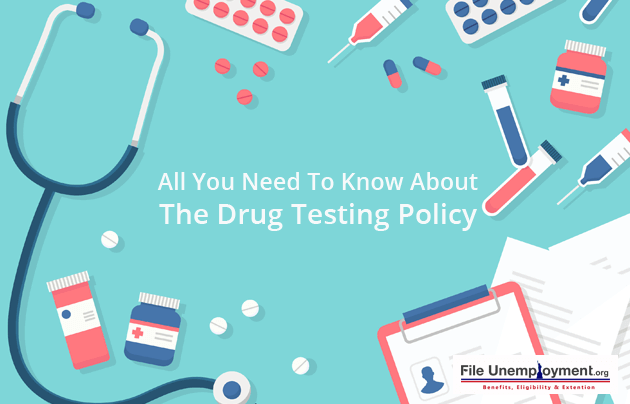Since the 1960s, the federal laws have banned states from drug testing jobless people that apply for benefits. But after the recent legislation, Republicans now want all states to institute tests for benefits.
Currently, $1.6 million has been spent on drug testing jobless people that apply for unemployment benefits. Also, over $2 million was spent in the last two years alone. This money could have been spent to expand welfare benefits or drug treatment programs.
You should know that employers are not legally required to test you for drugs. This is either at the time when you apply for a job or when you are working at the company. There are restrictions when or why employers can test you or if your boss has a reasonable suspicion.
This could be if they had a reasonable suspicion if there was a workplace incident. Also, if there were reliable witnesses of drug use or if you have agreed to be tested.
Testing Based on States
If you fail a drug test then the state decides whether you qualify for unemployment benefits. You would have to forgo your employment benefits if you do not pass a simple state-sponsored drug test.
In the State of Pennsylvania, if you fail or refuse a drug test then you will lose your benefits. State laws require you to get another job before you reapply. Wages are a minimum of six times greater than the weekly benefits. Unlike other states, you can regain benefits after a legally mandated waiting period.
In 2012, Congress passed a bill that enables states to drug-test any fired unemployment applicant. Mississippi passed a law to cut off benefits to those that fail drug tests.
If you are a resident of Connecticut, then your employer can test you if the safety of the job is important. For instance, if you are a forklift operator and if there is a reasonable suspicion that you are using drugs then there would be a test, a follow-up test and then you would be terminated. But, if you have a case then you can file a case in court or file a complaint with the state labor department.
Recent Ruling at Congress
The Trump Administration has been working hard to bring back and broaden the rule that was struck down last year in Congress which required drug testing for unemployment benefits.
With the Congressional Review Act (CRA), Republicans had repealed the Obama rule that limited the ability of states to drug test people that applied for unemployment pay.
While the Republicans felt that the 2016 rule was narrow and not far-sighted because it did not allow states to drug test people whose occupations needed it. This category referred to those employees that worked as airplane pilots, flight crews and air traffic controllers for commercial and public transit drivers and especially those that required carrying a firearm on their person.
While the Labor Department signaled its plans to issue broader rules, it will have to redefine the type of occupations that require a drug test. This would mean that there are a set of jobs that would have to ensure that one of the conditions of the requisites of the job involves drug testing.
The Labor Department warned that there would be a regulatory agenda where a semiannual roadmap for an administration’s rulemaking plans. After the repeal of 2016, states no longer have the authority to drug test unemployment compensation applicants.
Earlier, they could get suitable work based availability in occupations that conduct regular drug tests for unlawful use of controlled substances.
Regarding the issue of notice of proposed rulemaking, the Labor Department said, “It will identify the occupations that regularly conduct drug testing.” There are several liberal advocates are not happy with the prospect of a new rule that provides the administration’s move which could set an important precedent.
Here this allows you to issue regulations that provide action that is repealed under the CRA. Explaining this, George Wentworth, Senior Counsel of the National Employment Law Project explained that the 2016 rule focused on jobs that conduct random drug screenings and not those that test as a condition of pre-employment.
Currently, there are 13 states across the United States that have instituted specific regimes. So far, these experiences have proven expensive to administer year after year.
Despite this, the number of positive test results is extremely low. In 2016, out of nearly 250,000 applicants, there were only 369 that tested positive in four states and similarly zero tested positive for illegal drug use.
States that had positive results ranged from a low of 0.07 percent of all applicants to a high of 2.14 percent and rates far below the nearly 10 percent drug use rate which would fall under the general population.
All in all only three states have come forward and implemented drug tests across their jurisdictions. These states include Texas, Mississippi, and Wisconsin that have passed laws that allow employers and the state to allow drug testing for their unemployment insurance programs.
Drug Testing Policy – What You Need to Know
What are Drug Testing Policies?
There are several policies that start out by expressing the positive terms that are needed for safety at the workplace and adherence to the job and work quality. This includes improving safety and productivity and explaining violations, employee coverage, disciplinary measures, and rehabilitation.
Based on drug and alcohol policies, you should allow employees to have a written copy of these policies. Employers usually make signing these policies as a condition to be hired.
As part of the overall policy manual, all employees should sign separate forms for search and testing policies.
What if you refuse to sign the policy?
You cannot be fired if you refuse to sign an acknowledgment of the policy. But this should not be done until and unless you are warned. This should be done in writing or witnessed by others that refuse to sign.
An alternative approach that is used is by holding a mandatory staff meeting and employees are forced to sign an attendance register or face a disciplinary action for absence.
Though they might distribute the new drug-testing policy, discuss and distribute the policy in front of witnesses. You can choose to refuse to sign on the acknowledgment form. The only issue is that your employer can use this to their advantage and ensure that you are aware of the policy.
How is discipline or rehabilitation conducted?
Most companies notify employees that testing positive for drugs or alcohol will result in immediate termination. Some companies allow a chance for rehabilitation and a return to work under probationary conditions. But this type of second chance is not required under Texas or federal law.
A worker is allowed to return to work after a positive test result. This is generally under a “last chance” agreement. This provides for monthly random tests, a year’s probation, and immediate termination for any subsequent positive test result.
How Are Searches Done?
While some companies have incorporated these searches in their policies and part of the drug testing policies, there are several provisions that you should review and you should understand the sample drug-testing policy. This is based on the type of search and how the test is administered.
What are the Pre-employment Drug Testing?
Pre-employment drug testing is done by a few employers for some applicants. This is not regarded by the ADA as a medical examination.
This can be done at any point of the selection process and due to cost issues. Companies would restrict testing to final candidates only. On the issue of who pays for the test, most companies assume the burden. But, there is no specific law in Texas or Federal Law.
A Pre-employment drug test would discourage minority applicants. These are works that effectively result in less than minimum wages for an employee’s first paycheck.
It would be best to let doubtful cases be reviewed by employment law counsel prior to such testing. These tests would have to be kept confidential and all medical records should be maintained under the ADA.
Applying For Unemployment Claims
If you are filing your unemployment claims then you should know how to apply in your respective state by selecting your state from the Benefits by State option. Once you select your state, you can determine how to connect with Unemployment Office.
You will then have to learn how to submit your claim and understand your eligibility and what you stand to gain with the Benefits Calculator.
Make the most of your unemployment claims and connect with your unemployment office to help you find your next job!



